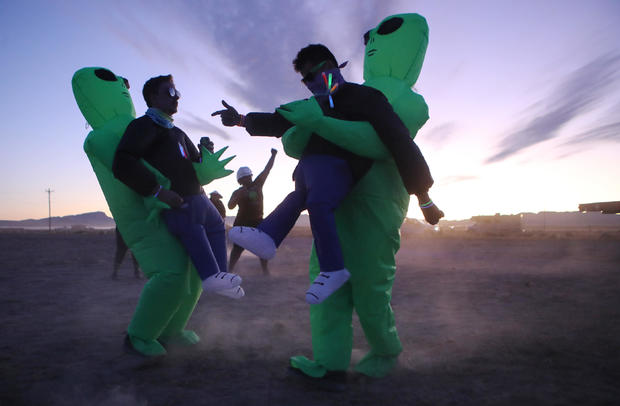Christmas Star Rising
Watch for the ‘Christmas Star’ as Jupiter and Saturn come closer than they have in centuries
The two largest planets in our solar system are coming closer together than they have been since the Middle Ages, and it’s happening just in time for Christmas — hence the nickname of the “Christmas Star.” While it’s not an actual star, the two planets will certainly make a bright splash in the night sky.
On the night of December 21, the winter solstice, Jupiter and Saturn will appear so closely aligned in our sky that they will look like a double planet. This close approach is called a conjunction. The fact that this event is happening during the winter solstice is pure coincidence, according to NASA.
“Alignments between these two planets are rather rare, occurring once every 20 years or so, but this conjunction is exceptionally rare because of how close the planets will appear to one another,” said astronomer Patrick Hartigan, a professor of physics and astronomy at Rice University in Houston, in a statement.
“You’d have to go all the way back to just before dawn on March 4, 1226, to see a closer alignment between these objects visible in the night sky.”
Cave Man Need Pubes On Face
Facial Hair Is Biologically Useless. So Why Do Humans Have It?
Pubes protect you; head hair keeps you warm. But beards and mustaches seem to exist for mainly ornamental reasons.
by JOSH CLARK & CHUCK BRYANT

THIS STORY IS adapted from Stuff You Should Know: An Incomplete Compendium of Mostly Interesting Things, by Josh Clark and Chuck Bryant.
There are really only two types of facial hair: beards and mustaches. Every style of facial hair you’ve ever seen is one of these two, or a combination of both.
Think about it like part of a Linnaean taxonomy of human traits that we just made up but totally makes sense, where facial hair is a family, beards and mustaches are each a genus, and their many varieties are individual species that could interbreed, as it were, to create hybrid subspecies like the duck-billed platypus of the facial hair family, the soul patch.
This might seem self-evident when you take a second to think about it, but then why would you be thinking about this at all unless you work in the relatively booming beard care industry or you’re a pogonophile—a lover of beards and the bearded. The Economist wrote about that very philia in a 2015 article about the growing trend of beardedness while reporting from the National Beard and Mustache Championship that was taking place in Brooklyn that year … obviously. (A year earlier, in February 2014, the New York Post ran a story about men in Brooklyn paying as much as $8,500 for facial hair transplants in order to grow better beards.)
B.E-E. Cancelled
Bret Easton Ellis: ‘Being cancelled has endeared me to part of the population’
After his recent collection of essays stirred controversy, the author has written the script for a slasher horror movie. He tells Ed Cumming why today’s social media storms are nothing compared with what he faced for writing American Psycho

Until last year, Bret Easton Ellis had been drifting from the public eye. Thirty-four years had passed since the instant celebrity that followed Less Than Zero, a stylish, nihilistic vision of Los Angeles published in 1985 when its author was just 21. The furore over American Psycho, his third and most famous novel, had long since faded into literary history, even after a resurgence around the 2000 film that starred Christian Bale as its corporate psychopath antihero, Patrick Bateman.
Ellis was prone to the odd misjudged tweet, in particular during 2012, a bumper year in which he variously claimed the American actor Matt Bomer was “too gay” to play the lead in 50 Shades of Grey, said the director Kathryn Bigelow was overrated because “she’s a very hot woman” and, most memorably, invited his followers to “bring coke now” to a party he was at. But by last year he had gone quieter on social media, too. Sober after a lifetime of well-documented excess, Ellis seemed to be charting a quieter course, writing screenplays and making podcasts.
Then he published White, a collection of musings about, among other things, safe spaces, Twitter, liberal hysteria over Trump, #MeToo, the radical beauty of Richard Gere in American Gigolo, Black Lives Matter, the Oscar-winning film Moonlight, and snowflake millennials – “Generation Wuss”, whom he declared unable to handle criticism. The essays – and interviews promoting them – provoked a barrage of criticism. The Guardian called it a “nonsensical, vapid book, written by a man so furiously obsessed with his right to speak that he forgets to say anything”. In the London Review of Books, James Wolcott noted Ellis’s gift for “upsetting the maximum number of people with the minimum amount of effort”. Ellis was back in the news, portrayed more as a middle-aged crank than a bad boy.
Now, nearly two years since White’s release, Ellis claims to have been baffled by the reaction. “I was shocked,” he says. “It was an argument about aesthetics, and unfortunately the meaning got twisted. I never saw it as a proclamation or politics. I saw it more about cultural history. The reaction was politicised. It was terrible, because I really don’t feel that way at all. My boyfriend’s a millennial.” He often refers to his millennial boyfriend, Todd, a musician, in a way that reminds me of how Captain America uses his shield to block attacks but also as something to throw at his enemies. “Still, we were prepared,” he adds. “We knew it was going to freak the media out, and it did. It was nothing compared to American Psycho, when there were protests and people throwing blood on bookstores and telling me my career was over.”
Time To Put Up The Ol’ Christmas Tree
Banksy’s Bristol Sneeze
It’s a New Banksy! A Mural of a Woman Sneezing Has Appeared on the Side of a House in Bristol
The work is the anonymous street artist’s latest health-related message.
A new mural by Banksy has appeared on the side of a house in the southern UK city of Bristol. The piece shows a woman in a headscarf sneezing, with her dentures flying several feet out of her mouth and a graphic spray of saliva following them. She is doubled over by the force of the sneeze and has lost her grip on her purse and cane.
Two days after Brits began to receive the first doses of the Pfizer/BioNTech coronavirus vaccine, the piece seems to issue a gross reminder that, one step toward herd immunity notwithstanding, citizens ought to continue to wear their masks to avoid spreading the deadly virus via droplets, or in this case gobs, of saliva.
The Selfish Meme
The WIRED Guide to Memes
Everything you ever wanted to know about Nyan Cat, Doge, and the art of the Rickroll.
by ANGELA WATERCUTTER & EMMA GREY ELLIS

MEMES AND THE internet—they’re made for each other. Not because they’re digital visual communication (though of course, they are that), but because they are the product of a hive mind. They are the shorthand of a hyper-connected group thinking in unison. And, friends, the web hive mind is a weird (often funny, sometimes dangerous) place.
The term “meme” comes from evolutionary biologist Richard Dawkins. For Dawkins, cultural ideas were no different than genes—concepts that had to spread themselves from brain to brain as quickly as they could, replicating and mutating as they went. He called those artifacts memes, bits of cultural DNA that encoded society’s shared experiences while also constantly evolving.
But Dawkins coined the term in 1976, in his book The Selfish Gene, long before the modern internet, before memes morphed into what they are now. Back then, Dawkins was talking about passing along culture—song melodies, art styles, whatever. Today, denizens of the internet think of memes as jokes passed across social media in the form of image macros (those pictures of babies or cats or whatever with bold black-and-white words on them), hashtags (the thing you amended to what you just wrote on Twitter), GIFs (usually of a celebrity, reality star, or drag queen reacting to what you just wrote on Twitter), or videos (that Rick Astley video people used to send you).
Spliffs In The Temple Tonight
Did Ancient Hebrews Get High During Temple? A New Archaeological Discovery Suggests They Did
Archaeologists confirm what your Jewish friends already suspected: ancient religious services were way more fun.
Frankincense, myrrh, and… cannabis? Archaeologists have discovered traces of weed on an ancient Israelite altar, suggesting that getting high was a religious ritual for the Hebrew people.
The discovery was made using gas chromatography and mass spectrometry testing on an Iron Age Judahite shrine at Tel Arad, in Israel’s Negev desert. The cannabis altar was in the inner sanctum of the temple, known as the cella, or holy of holies.
“We know from all around the Ancient Near East and around the world that many cultures used hallucinogenic materials and ingredients in order to get into some kind of religious ecstasy,” Eran Arie, curator of Iron Age and Persian Periods archaeology in the Israel Museum in Jerusalem told CNN. “We never thought about Judah taking part in these cultic practices. The fact that we found cannabis in an official cult place of Judah says something new.”
Puppies Puppies!
Demon Iceberg To Commit Genocide on Cute Penguins
Giant iceberg on course to collide with south Atlantic penguin colony island
By Cassandra Garrison
An enormous iceberg is heading toward South Georgia Island in the southern Atlantic, where scientists say a collision could devastate wildlife by threatening the food chain.
Scientists have long been watching this climate-related event unfold, as the iceberg – about the same size as the island itself – has meandered and advanced over two years since breaking off from the Antarctic peninsula in July 2017.
The peninsula is one of the fastest-warming places on Earth, registering a record high temperature of 20.75 degrees Celsius (69.35 degrees Fahrenheit) on Feb. 9. The warming has scientists concerned about ice melt and collapse leading to higher sea levels worldwide.
The gigantic iceberg – dubbed A68a – is on a path to collide with South Georgia Island, a remote British overseas territory off the southern tip of South America. Whether that collision is days or weeks away is unclear, as the iceberg has sped up and slowed down with the ocean currents along the way, said Geraint Tarling, a biological oceanographer with the British Antarctic Survey who has been tracking the icy mass.
A collision, while looking increasingly likely, could still be avoided if the currents carry the iceberg past the island, Tarling said.
Charley Pride Gone
Charley Pride, a country music Black superstar, dies at 86
By MARK KENNEDY
NEW YORK (AP) — Charley Pride, one of country music’s first Black superstar whose rich baritone on such hits as “Kiss an Angel Good Morning” helped sell millions of records and made him the first Black member of the Country Music Hall of Fame, has died. He was 86.
Pride died Saturday in Dallas of complications from Covid-19, according to Jeremy Westby of the public relations firm 2911 Media.
“I’m so heartbroken that one of my dearest and oldest friends, Charley Pride, has passed away. It’s even worse to know that he passed away from COVID-19. What a horrible, horrible virus. Charley, we will always love you,” Dolly Parton tweeted.
Pride released dozens of albums and sold more than 25 million records during a career that began in the mid-1960s. Hits besides “Kiss an Angel Good Morning” in 1971 included “Is Anybody Goin’ to San Antone,” “Burgers and Fries,” “Mountain of Love,” and “Someone Loves You Honey.”
Pre-Drip Pollock
Jackson Pollock, Before the Drip
“Mural,” his largest painting, is back in New York for the first time in 20 years, at the Guggenheim.
By Jason Farago

For Jacques-Louis David it was “The Oath of the Horatii,” for Kazimir Malevich it was “Black Square,” for Virginia Woolf it was “Jacob’s Room,” for Amy Winehouse it was “Rehab.” These are the breakthrough works — the hinges between the early career and the mature one. Everything before them looks like a warm-up, everything after like a natural outcome, though at the moment of their creation, who could tell?
For Jackson Pollock the hinge was soldered in 1943, when Peggy Guggenheim commissioned him to execute his first monumentally scaled painting: a 20-by-8-foot mural for the narrow vestibule of her Upper East Side townhouse. He’d already won some acclaim for early, Surrealist-inflected paintings, heavily influenced by his teacher Thomas Hart Benton and by the Mexican muralists he revered. But in “Mural,” Pollock opened up into canvas-covering gestural abstraction, with raw, sweeping lines applied with the action of the full body. The ponderous symbolism and overcalculated squiggles of Pollock’s first years got channeled to something rhythmic, automatic, almost dancing, and almost drippy.
Go Or No Halo
Amazon’s new health band is the most invasive tech we’ve ever tested
by Geoffrey A. Fowler and Heather Kelly, The Washington Post
Amazon has a new health-tracking bracelet with a microphone and an app that tells you everything that’s wrong with you.
You haven’t exercised or slept enough, reports Amazon’s $65 Halo Band. Your body has too much fat, the Halo’s app shows in a 3-D rendering of your near-naked body.
And even: Your tone of voice is “overbearing” or “irritated,” the Halo determines, after listening through its tiny microphone on your wrist.
Hope our tone is clear here: We don’t need this kind of criticism from a computer. The Halo collects the most intimate information we’ve seen from a consumer health gadget – and makes the absolute least use of it. This wearable is much better at helping Amazon gather data than at helping you get healthy and happy.
No Stream – CD
No, I Am Not Getting Rid of My Thousands of CDs
Our chief classical music critic writes in praise of going to a shelf, pulling out a recording and sitting down to listen.

In the late 1970s, when I was living in Boston, the record store of choice for classical music fans was the Harvard Coop. It had an extensive catalog and informed salespeople eager to offer invariably strong opinions on which albums to buy. I’d often bump into friends and fellow musicians, all of us flipping through bins of LPs. After making a purchase I’d have to squeeze yet more shelf space out of my cramped apartment, but I was pleased at my growing home library.
Then, in 1982, CDs arrived. Slowly everyone started converting from 12-inch vinyl LPs to four-and-a-half-inch plastic CDs in jewel-box cases that required a completely different storage setup. And what were you supposed to do with your old LPs?
Now the cycle has repeated itself, with CD sales dwindling to a fraction of their heights a couple of decades ago. Download and streaming services have taken hold, and physical discs have become obsolete. After all, with everything available online, why clutter up your living space?
Dylan Catalog Sold
The Dylan catalog, a 60-year rock ‘n’ roll odyssey, is sold
By DAVID BAUDER
NEW YORK (AP) — Bob Dylan has sold publishing rights to his catalog of more than 600 songs, one of the greatest treasures in popular music, to the Universal Music Publishing Group for an undisclosed sum.
The catalog includes such modern standards as “Blowin’ In The Wind,” “Tangled Up in Blue,” “Knockin’ On Heaven’s Door,” and “Like a Rolling Stone,” a body of work that may only be matched for its breadth and influence by the Beatles, whose songs were re-acquired by Paul McCartney in 2017.
The songwriting legend earned an estimated $300 million from the sale, according to The New York Times, which first reported it.
Dylan, 79, topped the Rolling Stone list of the 100 Greatest Songwriters of All Time in 2015 and the song “Like A Rolling Stone” was named by the magazine as the best ever written. He won the Nobel Prize for Literature in 2016, the only songwriter to receive the award.
Ikea Catalog Gone
Ikea is getting rid of its iconic catalog, one of the most popular books in the world, ending a 70-year print run
insider@insider.com (Grace Dean)
After almost 70 years, Swedish furniture giant Ikea is scrapping its iconic catalog.
The company will no longer produce print and digital versions of the book, it announced Monday.
It’s been touted as the most widely-distributed publication in the world, and more copies of the catalog are printed each year than the Bible or Quran.
A History Of Wood
from VICE
The Untold Story of Wood, the Well-Endowed Man From Those Coronavirus Texts
Through interviews with his loved ones, we dug deeper into the fascinating life of Wardy Joubert III, the real man behind the memes.

Last week, I went down a rabbit hole in pursuit of a story: the proliferation of prank texts that appear to provide breaking news links on the COVID-19 pandemic, only to open up to a photo of a beefy, naked Black man with a massive penis. I set out to find the well-endowed man to talk to him about his cult status during this time of crisis, only to find out he was a guy named Wood who had died several years ago.
Emails, DMs, and endless memes poured in from people who had read the story and wanted to know more about the now-fabled Wood. A few even asked about donating to Wood’s family. Like many of them, I felt unsatisfied with the story; it just didn’t feel like a closed case.
All I really knew about this man was that he had done a jerk-off video at some point in his life, and that he had died. It seemed unfair to tie a bow on a person’s legacy based on just two things from his years on earth. I’d hate to think that one day, when I’m gone, the only thing people might know about me is that I once fell on a cactus while drunk off Bud Light. So I set off to find out even more about who he was as a person beyond his large penis and meme infamy, and I did. This is the untold story of Wood, or, rather, Wardy Joubert III.
Christmas Star Coming
Jupiter and Saturn to align in the sky this month as ‘Christmas Star’
By Chris Ciaccia and Fox 13 News staff
The two largest planets in the solar system, Jupiter and Saturn, have fascinated astronomers for hundreds of years. But the two gas giants will do something next month not seen since the Middle Ages — they will look like a double planet.
The rare occurrence will happen after sunset on Dec. 21, 2020, the start of the winter solstice.
Back in 1614, German astronomer Johannes Kepler suggested that a conjunction of Jupiter and Saturn may be what was referred to as the “Star of Bethlehem” in the Nativity story, while others have suggested that the “three wise men” could have been a triple conjunction of Jupiter, Saturn and Venus. But it’s unknown if the “Christmas Star” was a real astronomical event, like a planetary conjunction or a comet.
Why Kids Can Kick Your Ass At Videogames
Kids Are Master Manipulators. So Use Game Theory Against Them
Kids are master manipulators. They play up their charms, pit adults against one another, and engage in loud, public wailing. So it’s your job to keep up with them.
by CHELSEA LEU

KIDS ARE MASTER manipulators. They play up their charms, pit adults against one another, and engage in loud, public wailing. So it’s your job to keep up with them, Carnegie Mellon’s Kevin Zollman says. His new book, The Game Theorist’s Guide to Parenting—written with journalist Paul Raeburn—explains how.
Force Cooperation
For siblings who refuse to work together, Zollman recommends a version of the prisoner’s dilemma. Assign them a task they can do jointly, like picking up the toys, then give them each the same reward or punishment based on their performance as a team: If one kid slacks off, the next time around the other one is likely to refuse to cooperate, and both will lose out. Over time, this setup compels teamwork.
Make Them Pay
Who gets the bigger room? Who gets to name the cat? It’s the old King Solomon problem: Some things you just can’t cut in half. So have kids bid with chores or their allowance. If one of them wants to name the cat Macaroni & Cheese, he’ll have to pay for it.
Ancient Bungee Art
More Photos Have Emerged from the Massive Rock Art Discovery in the Amazon, and They’re Amazing—See Them Here
Who knew that ancient Amazonians bungee jumped? Well, now you do!

Archaeologists recently discovered eight miles of painted rock face in the Colombian Amazon, sited along the Guayabero River. The Colombian and English researchers studying the works suspect that there could be upward of 100,000 individual paintings on 17 walls, dating from the time when humans first arrived in South America and then traveled through Central America.
The thousands of paintings, made by people who lived there 12,500 years ago, have captivated viewers the world over. Now, Artnet News has obtained more photographs of the giant sloths, armadillos the size of a car, and countless other animals, as well as humans dancing, engaging in ceremonies, and even bungee jumping.
Botanical Fractals
Decoding the Mathematical Secrets of Plants’ Stunning Leaf Patterns
A Japanese shrub’s unique foliage arrangement leads botanists to rethink plant growth models
/https://public-media.si-cdn.com/filer/ad/5a/ad5aea4e-1c44-4cce-87e4-860740b67860/aloe_polyphylla_1.jpg)
To the untrained eye, plants may appear to grow rather impulsively, popping out leaves at random to create one big green jumble. Take a closer look, though, and you’ll find that a few curiously regular patterns pop up all over the natural world, from the balanced symmetry of bamboo shoots to the mesmerizing spirals of succulents.
In fact, these patterns are consistent enough that cold, hard math can predict organic growth fairly well. One assumption that has been central to the study of phyllotaxis, or leaf patterns, is that leaves protect their personal space. Based on the idea that already existing leaves have an inhibitory influence on new ones, giving off a signal to prevent others from growing nearby, scientists have created models that can successfully recreate many of nature’s common designs. The ever-fascinating Fibonacci sequence, for example, shows up in everything from sunflower seed arrangements to nautilus shells to pine cones. The current consensus is that the movements of the growth hormone auxin and the proteins that transport it throughout a plant are responsible for such patterns.
Arecibo Gone
Iconic Arecibo Observatory radio telescope collapses after cable broke
A huge radio telescope in Puerto Rico that has long played a key role in astronomical discoveries collapsed on Tuesday, officials said. The Arecibo Observatory, made famous as the backdrop for a pivotal scene in the James Bond film “GoldenEye” and other Hollywood hits, had been shuttered since August after an auxiliary cable snapped and caused a 100-foot gash on the reflector dish.
Then a main cable broke in early November, leading the National Science Foundation to declare just weeks later that it planned to close the radio telescope because the damage was too great.
Many scientists and Puerto Ricans mourned the news, with some tearing up during interviews. Deborah Martorell, a meteorologist in Puerto Rico, tweeted early Tuesday: “Friends, it is with deep regret to inform you that the Arecibo Observatory platform has just collapsed.”
The Confessions of Samuel Little
from The Washington Post via San Francisco Chronicle
How America’s deadliest serial killer went undetected for more than 40 years
by Wesley Lowery, Hannah Knowles and Mark Berman, The Washington Post
Samuel Little guided his car to a stop in a secluded area off Route 27 near Miami and cut the engine. Before long, Mary Brosley had straddled his lap. He started playing with her necklace.
He’d met her at a nearby bar, drinking away the final hours of 1970. She was a tiny, beautiful mess of a woman, about 5-foot-4 and anorexic, barely 80 pounds. The tip of her left pinkie finger was missing, sliced off in a kitchen accident, and she walked with a limp from hip surgery.
Brosley said she had left a series of lovers and two children in Massachusetts after endless confrontations about her drinking. Estranged from her family, struggling to survive, she was the kind of woman who might disappear from the face of the Earth without attracting much notice.
Little admired the way the moonlight illuminated her pale throat.
“I had desires. Strong desires to . . . choke her,” he would later tell police. “I just went out of control, I guess.”
By New Year’s Day 1971, Mary Brosley, 33, had become the first known victim of a man since recognized as the most prolific serial killer in U.S. history. Over more than 700 hours of videotaped interviews with police that began in May 2018, Little, now 80, has confessed to killing 93 people, virtually all of them women, in a murderous rampage that spanned 19 states and more than 30 years.
Darth Vader Gone
Darth Vader actor David Prowse has died at 85
The 6-foot-6 former bodybuilder played the Star Wars villain in the original trilogy
By Kim Lyons
:format(webp):no_upscale()/cdn.vox-cdn.com/uploads/chorus_asset/file/22128025/830338148.jpg)
David Prowse, the actor who played Darth Vader in the original Star Wars films, has died, the Associated Press reported. He was 85.
George Lucas asked Prowse to audition for Star Wars after seeing the 6-foot-6 actor in the 1971 Stanley Kubrick film A Clockwork Orange. Prowse had his choice of playing Chewbacca or Vader, and opted for the latter because, as he told the BBC, “you always remember the bad guy.” Plus, he added, he didn’t fancy wearing Chewbacca’s fur suit.
Prowse played Luke Skywalker’s erstwhile father in Star Wars, The Empire Strikes Back, and Return of the Jedi, but famously, his voice didn’t make it into the films. He said all Vader’s lines, but the voice of James Earl Jones was later dubbed in.
A51 Why?
What is Area 51? And why is it so secretive?
BY JESSICA LEARISH
 Men dressed as aliens dance at “Alienstock,” a “Storm Area 51” spinoff event, on September 20, 2019 in Rachel, Nevada. GETTY IMAGES
Men dressed as aliens dance at “Alienstock,” a “Storm Area 51” spinoff event, on September 20, 2019 in Rachel, Nevada. GETTY IMAGES
It’s been a perennial American obsession for more than 50 years. It’s provided a shadowy backdrop for shows like “The X-Files” and movies like the 1996 summer blockbuster “Independence Day.” And in 2019, this well-known but little-understood location took over social media when one jokester inspired millions of people to RSVP “yes” to trespassing.
The place: Area 51, a remote patch of desert some 83 miles north-northwest of Las Vegas, next to a salt flat at the foot of a mountain. This military outpost — and what’s happened inside it — is so top-secret that its very existence was disputed until 2013.
In short, Area 51 was created during the Cold War to help America peek in on the Soviet Union. But, because of its clandestine beginnings and cutting-edge tech, many Americans came to associate the base with extraterrestrial ships and little green men.
Monolith Returned
A Mysterious Steel Monolith Was Discovered in the Utah Desert. Is It a Work of Art—or the Work of Aliens?
Theories about who or what is behind the object have started circulating online.
A mysterious steel monolith has been discovered deep in the red rock canyons of southern Utah. And no one seems to know who—or what—is behind it.
Officers from the Utah Department of Public Safety (DPS) eyed the object from a helicopter last week while counting bighorn sheep in the area. The spotters were quick to posit two theories about the polished steel block: it’s either a work of art, or the work of aliens.
“I’m assuming it’s some new-wave artist or something or, you know, somebody that was a big ‘2001: A Space Odyssey’ fan,” Bret Hutchings, the helicopter pilot, told the Utah news outlet KSL 5 News.
Happy Thanksgiving
Maradona Gone
Maradona: The making of a footballing legend
by Daniel Edwards
The Argentine hero celebrated his 60th birthday shortly before his untimely death on Wednesday, and Goal looks back on what made him such an icon
A legend, a man whose every word and action is headline news.
Diego Maradona passed away on Wednesday at the age of 60, though the Argentina and Napoli idol seemed to pack in enough action into his six decades to fill 10 regular lives.
From the mop-haired prodigy that first took the Primera Division by storm, through his adventures in Spain, Italy and on the international stage, Maradona has rarely been away from the public eye.
Mushies Going Mainstream
The Hunt For The Other Magic Ingredients In Magic Mushrooms

In the late 1980s, Jochum Gartz, a chemist at the Institute for Biotechnology in Leipzig, Germany, noticed something intriguing about magic mushrooms.
There are more than 200 species of fungus that produce psilocybin, which was then and now thought to be the “active ingredient” in psychedelic mushrooms. Those different mushrooms, found all over the world and grown in different conditions, were not at all the same. And what they did to the humans who ate them, Gartz observed, was definitely not the same.
Gartz noted 24 cases of “accidental” hallucinogenic mushroom ingestion. In every case, the users all reported intense euphoria—all positive vibes, with no anxiety, dystopia, or unease. No bad trip.
All 24 of the “good trippers” had eaten a species of mushroom called Inocybe aeruginascens. That species has relatively high levels of a compound called aeruginascin, one of several chemical compounds identified in psilocybin-producing mushrooms.
The Genius of M B-W
Margaret Bourke-White’s True-to-Life Gift
Eighty-four years ago today, a shiny and sophisticated pictorial publication hit the newsstands. The brainchild of Henry Luce and Briton Hadden, two prep school friends who ran the college newspaper at Yale, this glossy magazine would change the way Americans looked at their world. It was called, fittingly, Life.
Although Briton Hadden may be an unfamiliar name to you, he was a singular and pivotal figure in 20th century journalism. He and Luce had burst onto the scene in 1923 with Time, the nation’s first modern weekly newsmagazine. Its very conception was Brit Hadden’s, as was its distinctive voice, dubbed “Timestyle.” It was also Hadden who raised the money to launch it. All this was known in the 1920s, including by Time’s readers. In his authoritative account of those early years, scholar Isaiah Wilner produced an unpublished letter-to-the-editor from a reader who said, flatly, “Briton Hadden was the presiding genius.”
Herzog’s Fireball
What Does Werner Herzog Think About Trader Joe’s, Texas and Meteors?
In 1954, a woman was hit by a grapefruit-sized meteorite while napping on the couch. Known today as the Sylacauga meteorite, this asteroid flew in through the ozone layer, through the Alabama sky and hit Ann Elizabeth Fowler Hodges in her farmhouse. She was bruised on her torso but survived to become the subject of much publicity.
This story and more is featured in Werner Herzog’s latest documentary, Fireball: Visitors From Darker Worlds, a far-reaching portrait of the fascinating world of meteorites premiering Friday on Apple TV+ Considering that this cosmic dust falls on the planet every day, the film, co-directed by Herzog and scientist Clive Oppenheimer, helps us better understand the phenomenon of meteorites, from their history to how we track them today to their cultural significance.
The duo traveled to over 10 countries, from Saudi Arabia to India and Australia, visiting places where fireballs and massive meteors have fallen — like the Chicxulub crater, the largest asteroid ever known to hit the earth in Chicxulub Puerto, Mexico. They interviewed countless experts on meteors, from geochemist Nita Sahai to Cambridge University’s Simon Schaffer and even the Planetary Defense Coordination Office at NASA, which protects the earth from incoming asteroids with giant telescopes at the SJ Pan-STARRS Observatory in Haleakalā, Hawaii.
It isn’t all science, however, as it taps into the poetic beauty of meteors and their symbolic meaning, as with a tribe on Murray Island off the coast of Papua New Guinea, where locals have a traditional fireball dance.
